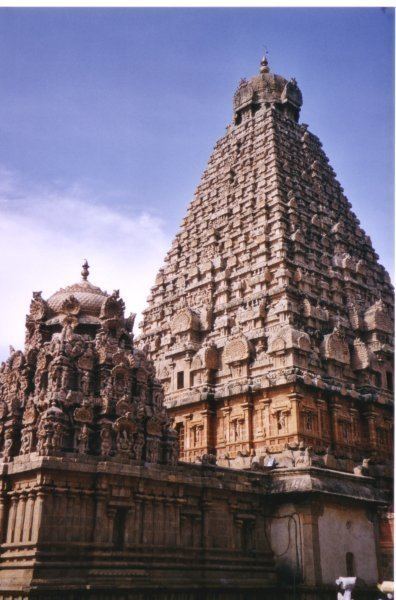 | ||
Atikamāṉ (also known as Adhiyamān, Adigamān or Satyaputra-Atiyān) were a famous royal Tamil dynasty of the royal Velirs. These king-chiefs ruled from their capital Tagadur (Present day Dharmapuri)from at least the 3rd century BCE. The Velir royal house was one of the four kingdoms of Tamilakam, ruling parts of the Kongu Nadu. They were surrounded by the Cheras to the west and the Pandyas and Cholas to the east.
Contents
The Atikamāṉs are mentioned in the Puranas as well as in ancient Tamil literature. Their rule of Tamilakam is mentioned in rock inscriptions of the Sangam period such as the Edicts of Asoka in the 3rd century BCE and the Gummireddipura plates with the added title Satyaputra - the "members of the fraternity of truth", synonymous with the Velir clan. A number of inscriptions in Jambai (Tirukkoyilur) add details of their sovereignty in the first century CE. This ruling tribe rose in prominence during the classical period of the history of Tamil Nadu. Their most famous ruler was Athiyamān Nedumān Añci, a powerful king who was one of the Kadai ezhu vallal (7 great patrons) of arts and literature in Tamilakam. His son Elini ruled Kudiramalai of the ancient Jaffna kingdom and Vannimai, a co-ruling contemporary of the famous king Korran. These kings belonged to a prolific Tamil horseman tribe.
Kingdom
The Satyaputra Velir-Athiyamān was a small kingdom situated on the eastern valley of Malaya Mountains of the Western Ghats (Anamala, Palani and Nilagiri).
Inscriptions
Asoka mentions the Satyaputras Velir clan in his inscriptions along with the Cholas, Pandyas and the Kerala putras. The Satyaputra Velirs wielded sufficient power in the time of Asoka (3rd century BCE) almost on par with the Cheras, Cholas and Pandyas.
In several excavated Tamil-Brahmi inscriptions of the first century CE found at Jambai, Tirukkoyilur of Viluppuram district, South Arcot in Tamil Nadu mention is made again of the dynasty:
The inscription mentions the Athiyā Chief Neduman Anci, a heroic historic king celebrated in volumes of the Sangam literature classics Purananuru and Akananuru. This Athiymān king was a descendent of the Velir dynasty mentioned in Asoka's edicts. The inscription records the endowment of a cave-shelter by the chieftain Atiyan Netuman Anci who sports the title Satiyaputo. The inscription gives the name of his clan (Atiyan), of his father (Netuman) and of himself (Anci). This clear statement enables researchers with absolute certainty, to identify a chieftain mentioned in the Tamil Sangam literature with a personage figuring in a Tamil-Brahmi inscription.
The Satyaputra-Athiyamān Velirs wielded sufficient power in the 3rd century BCE to be considered on par with the Cheras, Cholas and Pandyas, a power which continued for the next four centuries.
The Gummireddipura plates make mention of the Satyaputra Adigaman dynasty.
